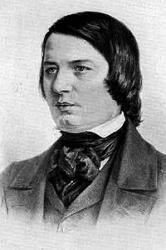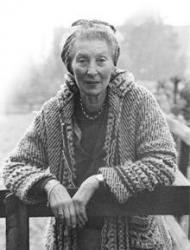Planning worship?
Check out our sister site, ZeteoSearch.org,
for 20+ additional resources related to your search.
- |
User Links
Person Results
William H. Walter
1825 - 1893 Person Name: William Henry Walterm 1825-1893 Composer of "FESTAL SONG" in Common Praise (1998)
William H. Walter
William Crotch

1775 - 1847 Adapter of "ST. MICHAEL (OLD 134th)" in The Mennonite Hymnal William Crotch (5 July 1775 – 29 December 1847) was an English composer, organist and artist.
Born in Norwich, Norfolk to a master carpenter he showed early musical talent as a child prodigy. The three and a half year old Master William Crotch was taken to London by his ambitious mother, where he not only played on the organ of the Chapel Royal in St James's Palace, but for King George III. The London Magazine of April 1779 records:
He appears to be fondest of solemn tunes and church musick, particularly the 104th Psalm. As soon as he has finished a regular tune, or part of a tune, or played some little fancy notes of his own, he stops, and has some of the pranks of a wanton boy; some of the company then generally give him a cake, an apple, or an orange, to induce him to play again...
Crotch was later to observe that this experience led him to become a rather spoiled child, excessively indulged so that he would perform.
He was for a time organist at Christ Church, Oxford, from which he was later to graduate with a Bachelor of Music degree.
His composition The Captivity of Judah was played at Trinity Hall, Cambridge, on 4 June 1789; his most successful composition in adulthood was the oratorio Palestine (1812). He may have composed the Westminster Chimes in 1793.
In 1797 Crotch was given a professorship at Oxford University, and in 1799 he acquired a doctorate in music. While at Oxford, he became acquainted with the musician and artist John Malchair, and took up sketching. He followed Malchair's style in recording the exact time and date of each of his pictures, and when he met John Constable in London in 1805, he passed the habit along to the more famous artist.
In 1834, to commemorate the installation of the Duke of Wellington as chancellor of the University of Oxford, Crotch penned a second oratorio titled The Captivity of Judah. The 1834 work bears little resemblance to the oratorio he wrote as a child in 1789.
In 1822, Crotch was appointed to the Royal Academy of Music as its first Principal, but resigned ten years later.[2] He spent his last years at his son's house in Taunton, Somerset, where he died suddenly in 1847. Among his notable pupils were William Sterndale Bennett, Lucy Anderson, Stephen Codman, George Job Elvey, Cipriani Potter, and Charles Kensington Salaman
--en.wikipedia.org/
William Crotch
Charles Lockhart
1745 - 1815 Person Name: Charles Lockhart, 1745-1815 Composer of "CARLISLE" in The Hymnal 1982 Born: 1745, London, England.
Died: February 9, 1815, London, England.
Lockhart was first organist of the Lock Hospital, and was for some years associated with Martin Madan in the musical arrangements there. Though blind from infancy, Lockhart had a distinct musical gift, and was especially known for training children’s choirs. His earliest tunes were printed on separate sheets. He published a set of hymn tunes about 1810.
Sources:
Frost, p. 680
Lightwood, p. 155
Nutter, p. 460
Music:
CARLISLE
TAMWORTH
http://www.hymntime.com/tch/bio/l/o/c/lockhart_c.htm
================
http://en.wikipedia.org/wiki/Charles_Lockhart_%28musician%29
Charles Lockhart
Samuel Wesley

1766 - 1837 Person Name: S. Wesley Composer of "BETHLEHEM" in The Day School Hymn Book Samuel Wesley; b. Feb. 24, 1766, Bristol; d. Oct. 11, 1837, London; composer and organist. Son of Charles Wesley, grandson of Samuel Wesley, 1662-1735
Samuel Wesley
Robert Schumann

1810 - 1856 Person Name: R. Schumann Composer of "SCHUMANN" in Song-Hymnal of Praise and Joy Robert Alexander Schumann DM Germany 1810-1856. Born at Swickau, Saxony, Germany, the last child of a novelist, bookseller, and publisher, he began composing music at age seven. He received general music instruction at the local high school and worked to create his own compositions. Some of his works were considered admirable for his age. He even composed music congruent to the personalities of friends, who took note of the anomaly. He studied famous poets and philosophers and was impressed with the works of other famous composers of the time. After his father’s death in 1826, he went to Leipzig to study law (to meet the terms of his inheritance). In 1829 he continued law studies in Heidelberg, where he became a lifelong member of Corps Saxo-Borussia Heidelberg. In 1830 he left the study of law to return to music, intending to pursue a career as a virtuoso pianist. His teacher, Friedrich Wieck, assured him he could become the finest pianist in Europe, but an injury to his right hand (from a practicing method) ended that dream. He then focused his energies on composition, and studied under Heinrich Dorn, a German composer and conductor of the Leipzig opera. Schumann visited relatives in Zwickau and Schneeberg and performed at a concert given by Clara Wieck, age 13 at the time. In 1834 he published ‘A new journal for music’, praising some past composers and deriding others. He met Felix Mendelssohn at Wieck’s house in Leigzig and lauded the greatness of his compositions, along with those of Johannes Brahms. He also wrote a work, hoping to use proceeds from its sale towards a monument for Beethoven, whom he highly admired. He composed symphonies, operas, orchestral and chamber works, and also wrote biographies. Until 1840 he wrote strictly for piano, but then began composing for orchestra and voice. That year he composed 168 songs. He also receive a Doctorate degree from the University of Jena that year. An aesthete and influential music critic, he was one of the most regarded composers of the Romantic era. He published his works in the ‘New journal for music’, which he co-founded. In 1840, against the wishes of his father, he married Clara Wieck, daughter of his former teacher, and they had four children: Marie, Julie, Eugenie, and Felix. Clara also composed music and had a considerable concert career, the earnings from which formed a substantial part of her father’s fortune. In 1841 he wrote 2 of his 4 symphonies. In 1843 he was awarded a professorship in the Conservatory of Music, which Mendelssohn had founded in Leipzig that same year, When he and Clara went to Russia for her performances, he was questioned as to whether he also was a musician. He harbored resentment for her success as a pianist, which exceeded his ability as a pianist and reputation as a composer. From 1844-1853 he was engaged in setting Goethe’s Faust to music, but he began having persistent nervous prostration and developed neurasthenia (nervous fears of things, like metal objects and drugs). In 1846 he felt he had recovered and began traveling to Vienna, Prague, and Berlin, where he was received with enthusiasm. His only opera was written in 1848, and an orchestral work in 1849. In 1850 he succeeded Ferdinand Hiller as musical director at Dusseldorf, but was a poor conductor and soon aroused the opposition of the musicians, claiming he was impossible on the platform. From 1850-1854 he composed a wide variety of genres, but critics have considered his works during this period inferior to earlier works. In 1851 he visited Switzerland, Belgium, and returned to Leipzig. That year he finished his fourth symphony. He then went to Dusseldorf and began editing his complete works and making an anthology on the subject of music. He again was plagued with imaginary voices (angels, ghosts or demons) and in 1854 jumped off a bridge into the Rhine River, but was rescued by boatmen and taken home. For the last two years of his life, after the attempted suicide, Schumann was confined to a sanitarium in Endenich near Bonn, at his own request, and his wife was not allowed to see him. She finally saw him two days before he died, but he was unable to speak. He was diagnosed with psychotic melancholia, but died of pneumonia without recovering from the mental illness. Speculations as to the cause of his late term maladies was that he may have suffered from syphilis, contracted early in life, and treated with mercury, unknown as a neurological poison at the time. A report on his autopsy said he had a tumor at the base of the brain. It is also surmised he may have had bipolar disorder, accounting for mood swings and changes in his productivity. From the time of his death Clara devoted herself to the performance and interpretation of her husband’s works.
John Perry
Robert Schumann
Ananias Davisson
1780 - 1857 Composer of "GOLDEN HILL" in Hymns and Tunes Ananias Davisson (February 2, 1780 – October 21, 1857) was a singing school teacher, printer and compiler of shape note tunebooks.
Davisson was born February 2, 1780 in Shenandoah County, Virginia. He spent his last years living on a farm at Weyer's Cave, about 14 miles from Dayton, Virginia, and died October 21, 1857. He is buried in the Massanutten-Cross Keys Cemetery, Rockingham County, Virginia. Davisson was a member and ruling elder of the Presbyterian Church.
He is best known for his 1816 compilation the Kentucky Harmony (Harrisonburg, Virginia), which is generally considered the first Southern shape-note tunebook. Composer and publisher William B. Blake said it was "a book characteristic of that period, abounding in minor tunes." Other books published by Davisson were A Supplement to the Kentucky Harmony (Harrisonburg, Virginia: 1820), Introduction to Sacred Music, Extracted from the Kentucky Harmony and Chiefly Intended for the Benefit of Young Scholars, (Harrisonburg, Virginia: 1821), and A Small Collection of Sacred Music (Harrisonburg, Virginia: 1825). According to musicologist George Pullen Jackson, Davisson's compilations are "pioneer repositories of a sort of song that the rural South really liked." Perhaps his best-known tune is "Idumea," a minor tune very popular in Southern shape note circles and featured in the movie Cold Mountain.
In addition to his own tunebooks, Davisson also printed Songs of Zion by James P. Carrell (1821)
--en.wikipedia.org/wiki/
Ananias Davisson
Flossette Du Pasquier
Translator (French) of "Teach me, my God and King" in Cantate Domino
Flossette Du Pasquier
Charles Steggall
1826 - 1905 Person Name: C. Steggall, Mus. Doc. Composer of "DAY OF PRAISE" in Worship Song
Charles Steggall
Johann Georg Ebeling

1637 - 1676 Person Name: J. G. Ebeling Composer of "FRANCONIA" in Church Hymns and Tunes Johann George Ebeling Germany 1637-1676. Born at Luneburg, Germany, he studied theology at the University of Helmstedt. He was a composer, author, editor, and collector of music. In 1660 he became head of the Hamburg Collegium, and in 1662 cantor of St. Nicholas Church in Berlin. In 1667 he begam teaching music and Greek in Stettin. He wrote choruses, chorales, cantatas, instrumentals oratorios, requiems and music for over 100 lyrics of Paul Gerhardt. He also wrote about music history. 278 works. He died in Stettin.
John Perry
Johann Georg Ebeling
Elizabeth Poston

1905 - 1987 Person Name: E. P. Harmonized with descant of "SANDYS" in The Cambridge Hymnal Elizabeth Poston (24 October 1905 – 18 March 1987) was an English composer, pianist, and writer.
See more in:
Wikipedia
Elizabeth Poston


 My Starred Hymns
My Starred Hymns

